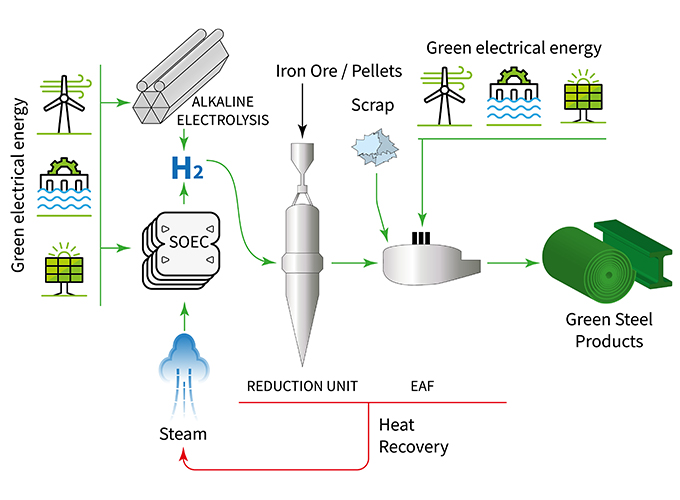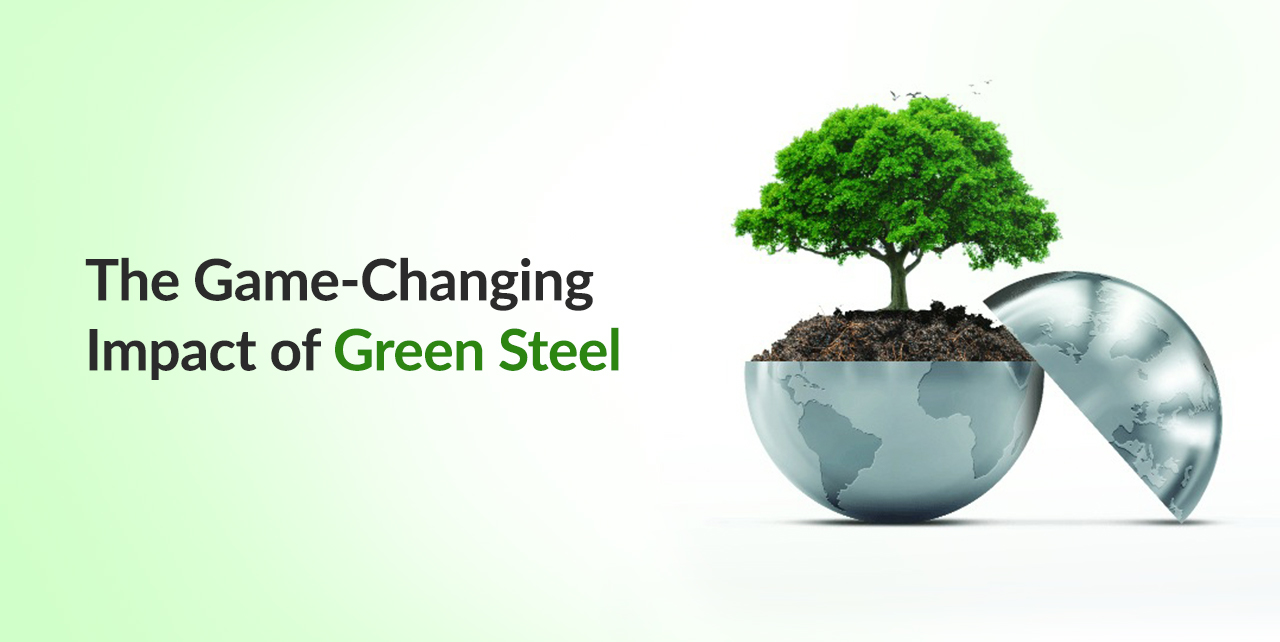In the push for a greener future, one of the most promising developments in recent years has emerged from an unexpected quarter: the steel industry. Green steel, a revolutionary approach to steel production, is set to transform not only the manufacturing sector but also contribute significantly to global sustainability efforts.. This new type of steel not only lowers the carbon footprint of traditional steel production but also brings many benefits to different sectors. In this article, we’ll look at the green steel process, its advantages for the construction industry, the general public, forest conservation, and its role in restoring natural landscapes.
From Ore to Eco-Friendly: The Green Steel Process
Green steel represents a paradigm shift in metal production. Unlike traditional steel manufacturing, which relies heavily on coal and contributes substantially to global carbon emissions, green steel utilizes renewable energy sources and alternative raw materials, such as hydrogen, to dramatically reduce its carbon footprint.
Steps in the Green Steel Process:
- Raw Material Preparation: Instead of coal, green steel production utilizes hydrogen or biomass as a reducing agent.
- Iron Reduction: Hydrogen reacts with iron ore, producing water vapor instead of carbon dioxide, significantly reducing greenhouse gas emissions.
- Steelmaking: The reduced iron is transformed into steel using electric arc furnaces powered by renewable energy sources.
- Finishing: The steel undergoes processing and finishing for various applications, maintaining the same high quality as traditional steel.

Transforming the Construction Industry with Green Steel
The construction sector stands to benefit significantly from the adoption of green steel:
Reduced Carbon Footprint: Green steel helps construction projects meet increasingly stringent sustainability goals and regulatory requirements.
Enhanced Reputation: Using eco-friendly materials positions construction firms as leaders in sustainability, potentially attracting environmentally conscious clients and partners.
Long-term Cost Savings: While initial costs may be higher, the long-term savings from lower energy use and potential tax incentives make green steel a smart investment for forward-thinking companies.
Green Steel Benefits for the General Public
The impact of green steel extends beyond industry, offering tangible benefits to society at large:
Cleaner Air Quality: Lower emissions from steel production contribute to cleaner air, benefiting public health in industrial areas and beyond.
Fighting Climate Change: By reducing greenhouse gas emissions, green steel helps in global efforts to fight climate change, ensuring a healthier planet for future generations.
Job Creation: The transition to green steel manufacturing creates new job opportunities in renewable energy and green technology sectors, contributing to economic growth in sustainable industries.
Protecting Forests with Green Steel
Green steel production offers significant advantages for forest conservation, aligning industrial activities with environmental protection:
Reduced Deforestation: Traditional steel production often leads to deforestation for coal mining. Green steel eliminates this need, helping to preserve vital forest ecosystems.
Biodiversity Protection: By reducing the pressure on forests, green steel helps protect habitats and maintain biodiversity.
Carbon Sequestration: Preserving forests boosts their natural ability to absorb CO2 from the atmosphere, further contributing to climate change mitigation efforts.
The Role of Green Steel in Restoring Natural Landscapes
The shift to green steel supports the restoration of natural landscapes, promoting a balanced and sustainable environment.
Land Rehabilitation: Areas once used for coal mining can be rehabilitated and repurposed, restoring natural habitats and landscapes.
Water Conservation: Green steel production typically uses less water, helping to protect natural water sources and prevent the degradation of aquatic ecosystems.
Sustainable Development: By reducing the environmental impact of steel production, green steel supports sustainable development practices that prioritize ecological balance.
Green steel represents a significant leap forward in our journey towards a more sustainable future. Its positive impact on the construction industry, public health, forest conservation, and natural landscape restoration underscores the importance of adopting and supporting green steel technologies.
As industries and governments continue to invest in and promote these innovations, green steel will play an increasingly crucial role in reducing our global carbon footprint and fostering a healthier, more sustainable planet. The transformation of this fundamental industry serves as a powerful example of how technological innovation can align economic progress with environmental stewardship, paving the way for a greener, more sustainable world.


